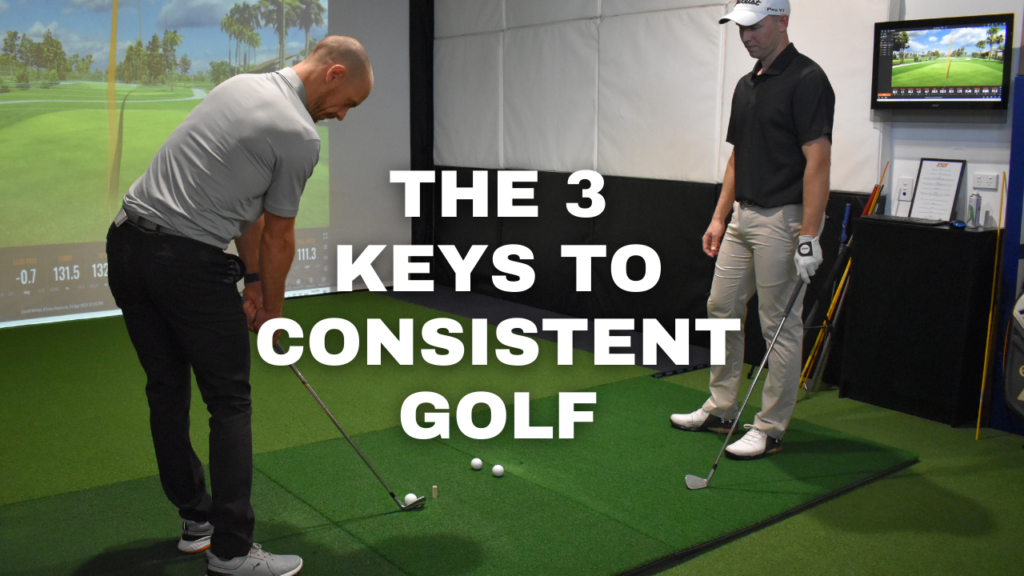We all want to be consistent, and consistently good. Yet there are so many ways to become a more consistent golfer. In this training episode I'm going to share, what I believe to be, the three key factors in hitting repeatable and consistent golf shots.
It's all about impact
As you'll see when watching the best in the world on the PGA Tour, there are MANY different styles of swings. Some funkier looking than others and some more "textbook", (whatever that means), but ultimately all the ball really cares about is what's happening at impact - the actual moment when you strike the golf ball. This is the only chance you have to tell the golf ball where you want it to go.
As a golf coach, there are three main things I'm looking for when it comes to improving a player's golf shots. You might be wondering, what could these 3 things be?
...Is it the "ideal" takeaway?
...Is it being in the "perfect" top of the backswing position?
...Is it keeping the head still?
Well, it's neither of the above. And on a side note, neither of the above is something you should be striving for anyway. Remember, we are all built differently, our bodies are unique, our limitations are different and there is no perfect way to swing a golf club. However, there is a most efficient way to swing and that is based on what the person can physically do. This is the premise that forms the basis of my coaching philosophy. But for now, let's get back to the BIG THREE.
Ok, so the big three are nothing to do with hitting certain positions in the swing, but they are everything to do with impact conditions. That tiny teeny moment in time when the golf ball compresses against the club face. The same time that we cross our fingers and toes and hope that the instructions we've given to that little white ball are the ones we wanted.
The shot direction will then be primarily determined by impact location, face angle, and club path. Let's discuss them further here:
Impact Location
The location where the ball makes contact with the face is so important and so often overlooked. The strike location is the first thing I look for as a golf coach. I am fortunate to have access to the latest launch monitor technology in Trackman which shows me exactly where a client is hitting the ball. After a dozen or so shots I will have a good idea of their general strike pattern.
If you don't have access to Trackman, then you can simply use strike spray or face tape in order to see where you are striking the golf ball.
Where the ball strikes the club face has such a big influence on the golf shot. For example. With the driver any shots struck out of the toe of the golf club can create more hook spin. Shots out of the heel of the golf club can create more slice spin. This is due to the gear effect. And just to note, the curvature (or bulge) on the face of the driver is there to make the gear effect work for you rather than against you. More on this another time. But for now, it's just important to note that strike location is so important to hitting consistently flighted golf shots.
When you're hitting iron shots, you'll find there's very little gear effect (depending on the iron design), so shots struck off the toe will twist the face to the right, and shots off the heel will twist the face to the left (for a right-handed player) and the strike location will not create the same kind of spin as the driver.
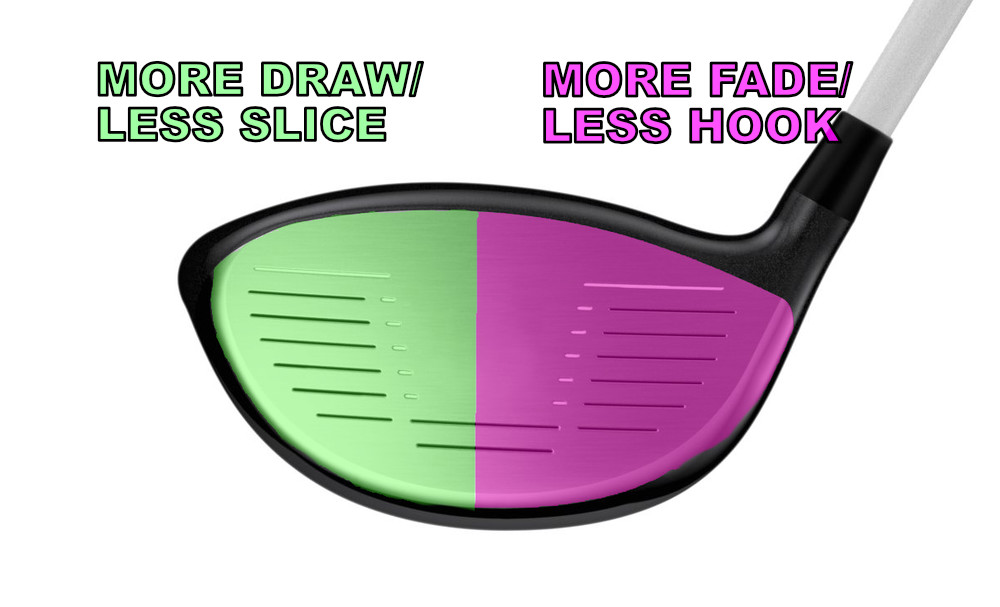
What about the dreaded sh..sh..sh..shaaannk?!
Firstly, we've all been there, and it sucks! The shank can seemingly come out of nowhere, or it can be something that the everyday golfer can be plagued with from time to time. Either way, during a golf lesson, when a client hits it out of the heel or hits the dreaded shank, I'll often ask them where on the face they think the ball made contact. And I can say that, overwhelmingly, most clients actually think they hit the ball out of the toe! This right here is a great example of how important it is to have feedback and to know exactly where your strike location is.
"With better awareness, you can make better decisions about what to do differently, and those better decisions can lead to much better results."
You can imagine how trying to fix, what you think is a toe strike, when in fact you're hitting it out of the heel, can lead you down a long and windy road.

Want more distance?
Whilst I'm a huge advocate for getting stronger physically and using overspeed training to increase club speed in an effort to hit the ball further, I can also say that in my 17 years as a golf coach, there's an even quicker way to add more distance. You can probably guess what it is by now?...
...Yes, you are right. It's striking the middle of the club face.
Sounds simple, doesn't it? But you'll be surprised at how many of my clients over the years have chased more speed rather than focusing on becoming more efficient first. The centered strike helps increase ball speed (and distance) as more energy is able to be transferred to the golf ball. We refer to this as Smash Factor, when coaching with Trackman.
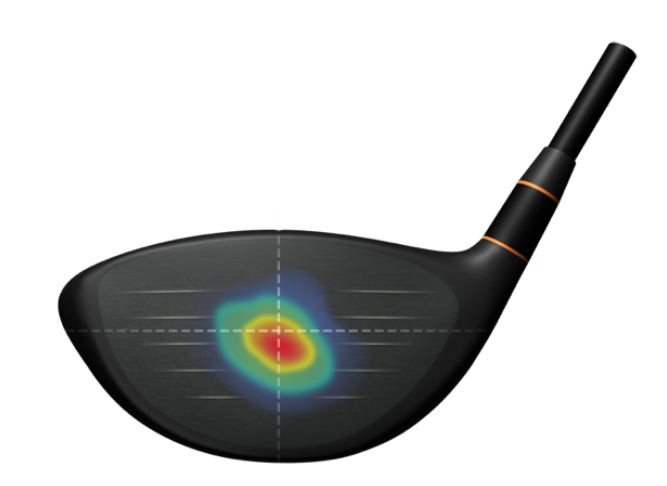
FACE ANGLE & CLUB PATH
Face angle and club path are the other two primary factors in determining shot direction.
Face angle is the direction the club face is pointing (right or left) at the moment of impact and is measured relative to your target line. Most players refer to this as having an "open" or "closed" club face.
Club path is the direction the club head is moving (left or right) at impact and is measured relative to the target line. Most golfers will relate to the club path as either swinging from "in-to-out" or "out-to-in".
Club face is king!
Club face is king is a term I often share with my clients, and it's so true! You could have the weirdest looking swing in your Saturday four-ball, but if you're able to get the club face in the position you want at impact then the ball is going to at least start somewhere close to the direction you want. In fact, the golf ball actually launches in the direction of the club face - approximately 80% on full shots.
But a good face angle coupled with a good impact location isn't enough on their own. This is where the club path comes in...
Face angle largely determines the launch direction whilst the shot shape is mostly determined by the club path relative to the face angle. Think of it this way: when a ball is struck with a descending blow, i.e. ball first, turf second, the attack angle is down and yet the ball goes up! This is because the ball's launch direction starts much closer to where the face angle (or loft in this case) is pointing.
A few final important points to note:
- The initial ball direction will fall between the club path and face angle, but will always favour the face angle.
- The more disparity between the club face and club path (i.e. pointing in different directions) the more the balls spin axis tilts, therefore creating increased curvature/shape to the shot.
The image below will give you a visual of the different ball flights depending on your face angle and club path relationship (assuming a centered strike).
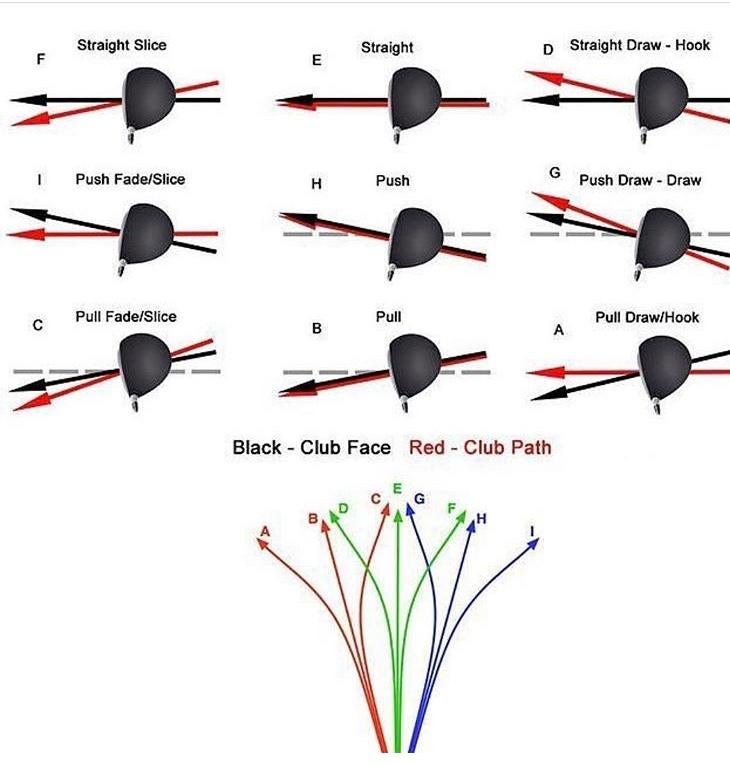
During any of my teaching sessions, if whatever I change is not having a net positive effect on either of the big three (impact location, club path or face angle at impact), then what am I actually even doing?! This is my goal. Given that most everyday golfers I teach often have a busy family and work life and limited time to practice their golf, I will look for the least invasive ways possible to improve the big three!
Over the years as a golf coach I have witnessed each of these impact conditions bringing with them, varying difficulty levels with regards to the everyday golfer being able to manage them. And I can summarise it like this;
Club Path - The easiest to control, the most consistent, and often the easiest to change.
Impact Location - Not quite as easy to control, but can be trained with the right type of skill-based practice
Face Angle - By far the most challenging to control of the big three, the most difficult to manage consistently, and yet, the most influential.
It is my belief that to become more consistent you should look to find a trusted shot shape (rather than trying to hit it perfectly straight). My theory behind this is that once you've found a reasonably consistent club path and reasonably consistent impact location, you can then focus on the king (the face angle). If you can create a face angle that compliments the club path and impact location, then you're more likely to at least favour one side of the golf course more than the other.
This is one way to avoid the dreaded two-way miss and take one side of the course out of play. Ultimately, you want to stand over a golf shot and have a good idea and an intention about the shape of shot you're about to hit and the confidence to commit fully to the swing! This comes with having a good handle on your big three.
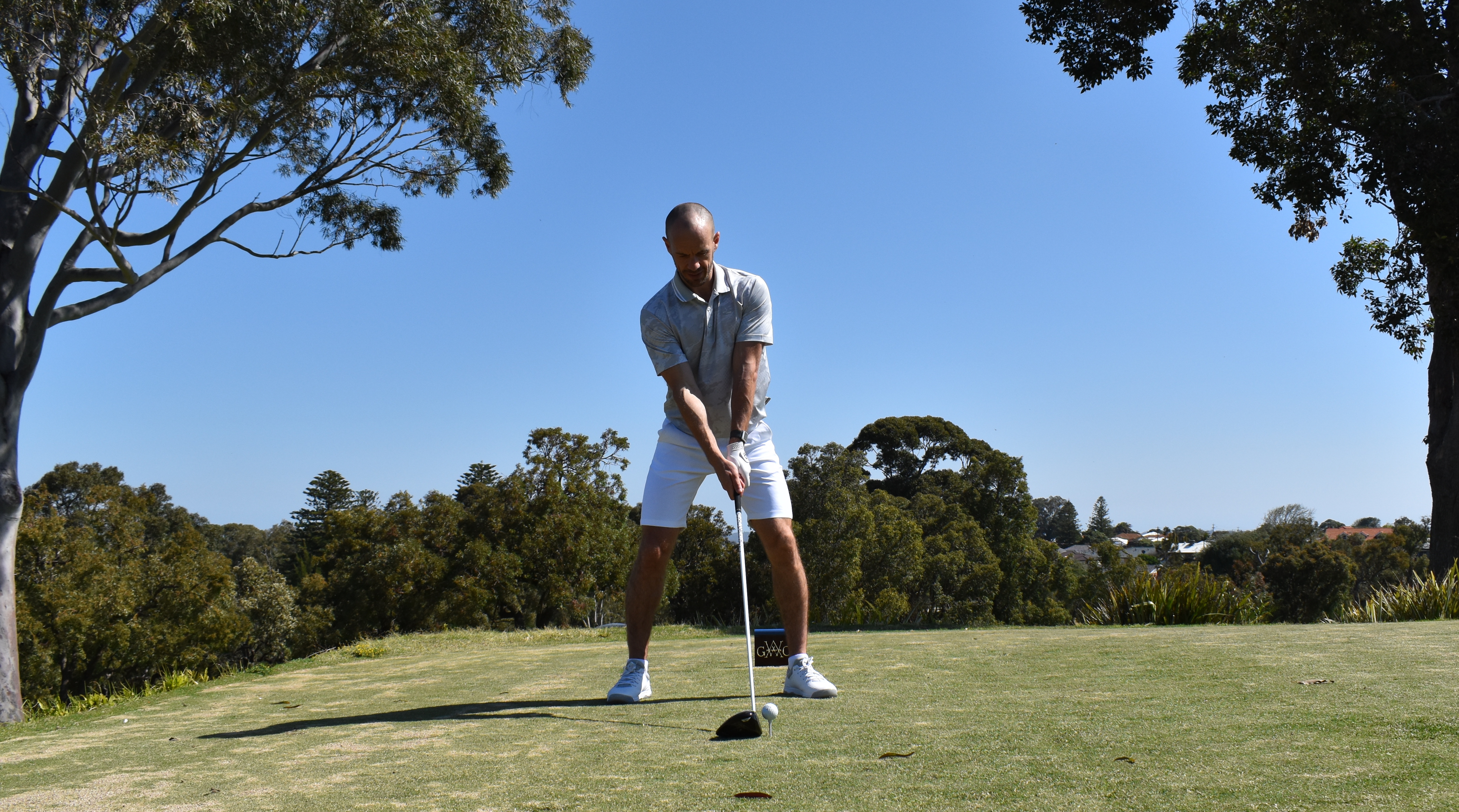
If you'd like any help on understanding and developing your big three , click here to learn more about how we can work together to help you create lasting success in your golf game.
If you have any questions or comments, please post them below. You can also head over to my YouTube channel with more FREE tips.
Thanks again for checking out my latest Training Episode, and I hope to connect with you soon!
